By Islam El Shazly
If anyone deserves the title of “Legendary Explorer” in our modern times it has to be this man, Ahmed Hassanein Pasha. At the very least he would have to be on the top of a very short list.
In his lifetime he had been many things, a writer, diplomat, Chamberlain and the very reason he’s on this list, an explorer. Just like his predecessors from the golden age of exploration, he was a man of many talents, and these talents and insatiable curiosity to discover the unknown is what led him to leave civilisation behind and embark on a journey that would take him across the unforgiving Sahara, not once, but twice, and with none of the modern day comforts of SUV’s.
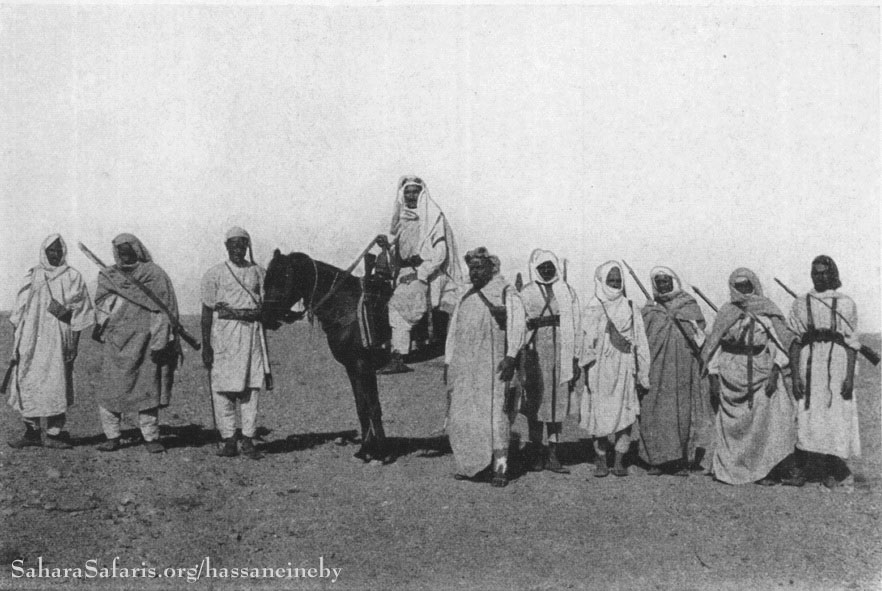
The Armed Men of the Caravan: Hassanein Pasha is mounted upon his Arab horse Baraka. Courtesy of SaharaSafaris.org.
Born to a Turco-Circassian family in 1889 CE, Ahmed Mohammad Makhluf Hasanein Al-Bulaki had a more privileged upbringing than most. His father, a distinguished Sheikh and Scholar at Al-Azhar Mosque and University, and his grandfather was Admiral Ahmed Mazhar Hassanein Pasha, the last admiral of the Egyptian navy before the British occupation in 1882. All of which led to the young Ahmed Hassanein to the best education available, and a university degree from Oxford where he graduated at the onset of WWI. While at Oxford he picked up fencing, excelled at it, and represented Egypt in the 1920 and 1924 Olympics.
He was a career politician and diplomat, whose positions took him from the Ministry of Interior to the office of Sir John Maxwell, Commander in Chief of British forces in Egypt, and later to the Egyptian embassies in Washington and London. Not unlike Ahmad Ibn Fadlan! Ultimately, he landed in the Royal court of King Fouad I serving as First Chamberlain and later becoming a mentor to the young Prince Farouk. When the young prince was raised to the throne Ahmed Hassanein Pasha was by his side appointed as governor of the Royal Household, by which he became responsible for the upbringing and education of the king. [Source: Michael Haag]
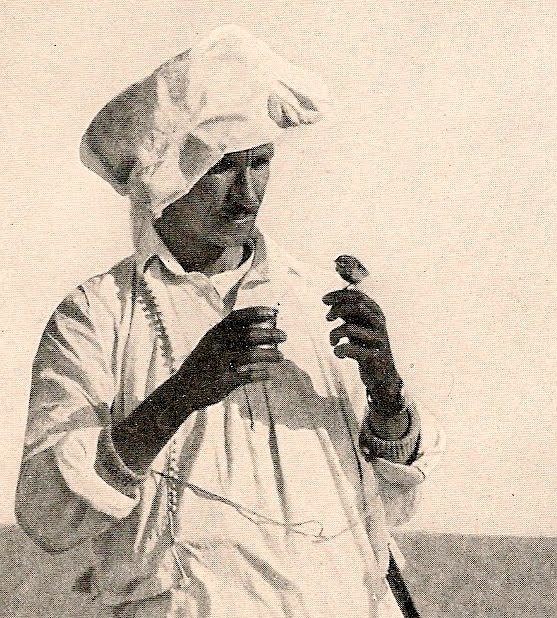
A friend in need… Befriending a robin that had fallen exhausted on its way from Equatorial Africa to Europe to spend the summer. In his right hand, Ahmed Hassanein Pasha is holding a glass of water from which the bird has just drunk. Courtesy of Michael Haag.
The Lost Oases
At his heart a Bedouin, he set out on an unprecedented journey across one of the most hostile terrains on earth, the great Sahara Desert. Undaunted, his voyage would lead him into previously uncharted territory, a 2,200 mile adventure traversing the Great Sand Sea, culminating in the discovery of the rock drawings at Uweinat, and ending in El-Obeid in the Anglo-Egyptian Sudan. The importance of the rock art discovery was not lost on later archaeologists and anthropologists, it gave rise to the theory that Ancient Egyptian civilisation might have had a much earlier start, and not by the banks of the river Nile.
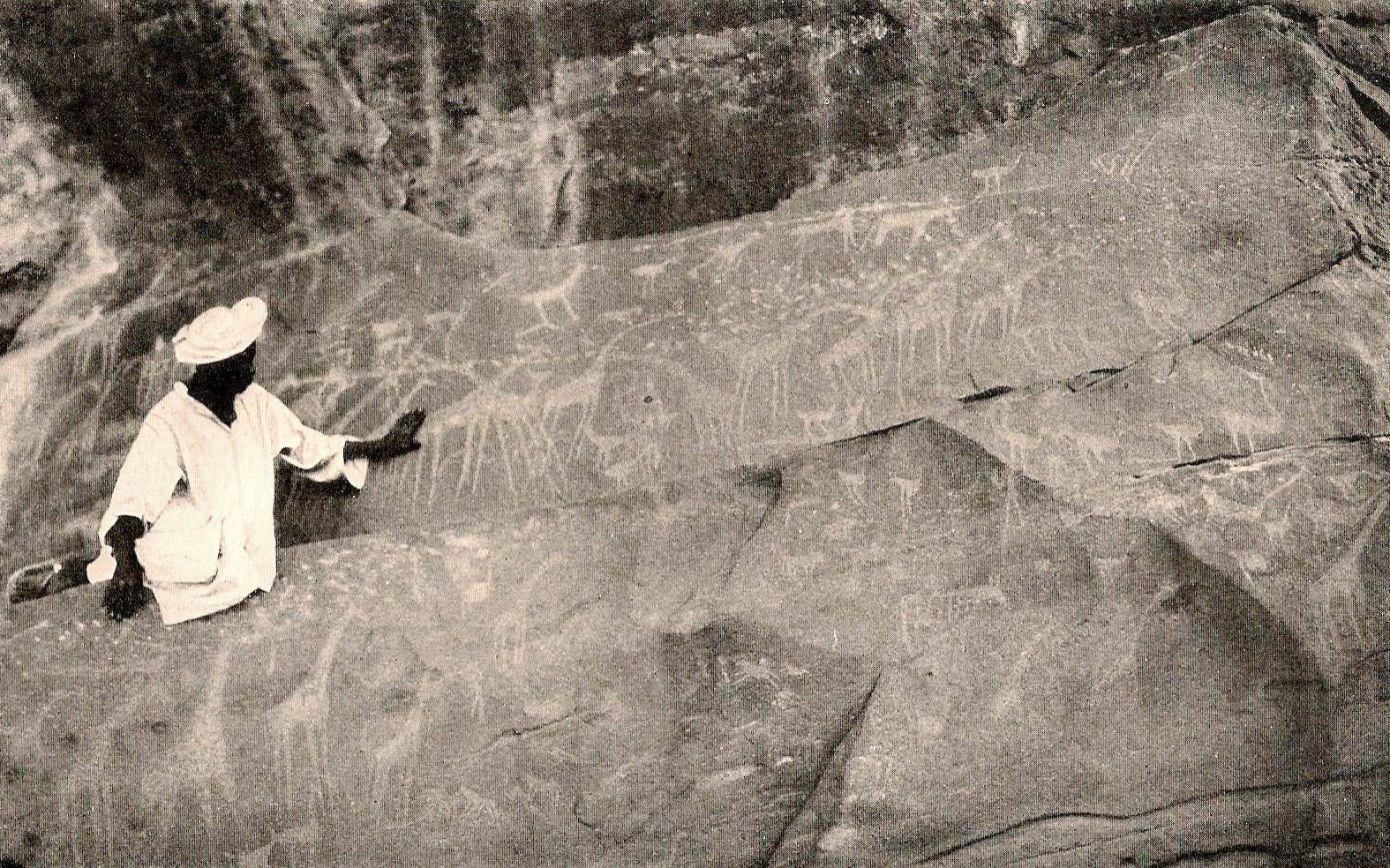
A member of Hassanein’s expedition examines rock carvings at Uweinat depicting giraffes, lions, ostriches and possibly cows, indicating that the Sahara was once grassland and home to a sophisticated pastoral culture. Courtesy of Michael Haag.
Ahmed Hassanein Pasha, at the time a Bey, started his expedition in Salloum in the far north west of Egypt on the border with Libya on the 21st of December, 1922. Nine days later, his first port-of-call was Siwa “one of the oldest oases of the Libyan Desert, and the most prosperous because of its date trees and its numerous springs. Its geographical position has made it a centre for Bedouins trading between Egypt and the interior of Cyrenaica (Eastern Libya).”
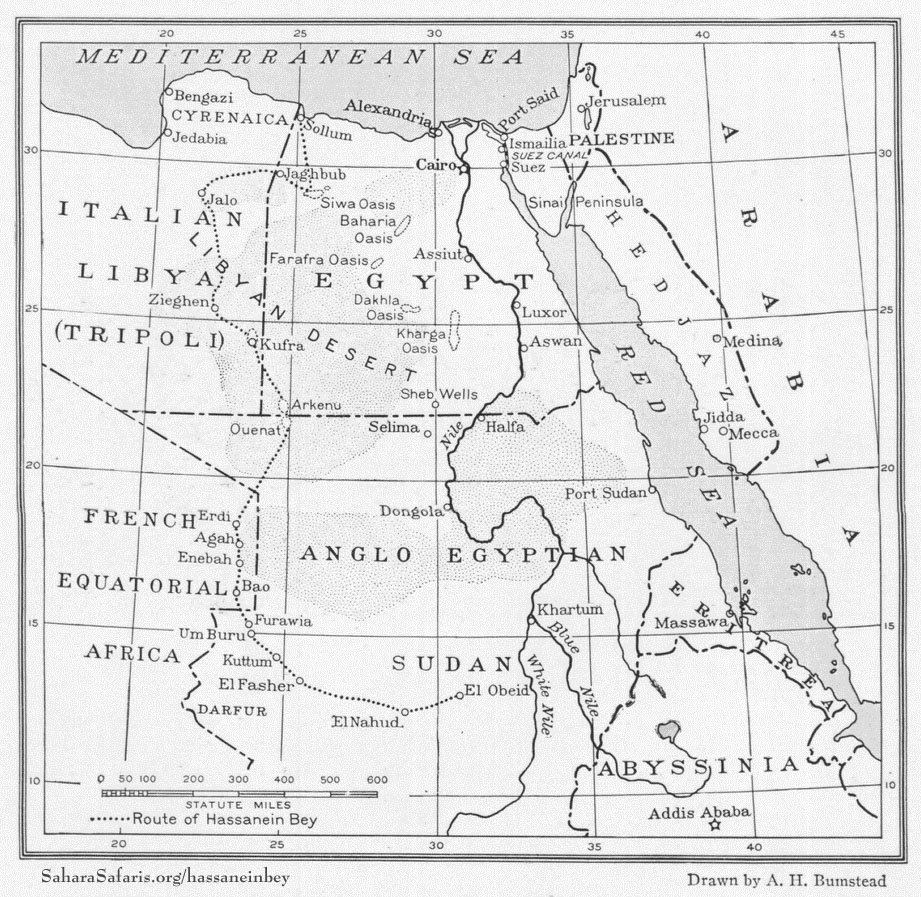
A sketch of the map showing the route of Hasanein Bey through the Libyan Desert. Courtesy of SaharaSafaris.org.
From Siwa it was onto the next stop, Jaghbub, the centre of Senoussi learning and were the founder of the sect is buried. Five weeks later, after securing a Zawya caravan heading west, where they reached Jalo two days later. For the next six months they travelled ever southward, and discovering two lost oases along the way, Arkenu and Uweinat at the extreme south-west corner of Egypt.
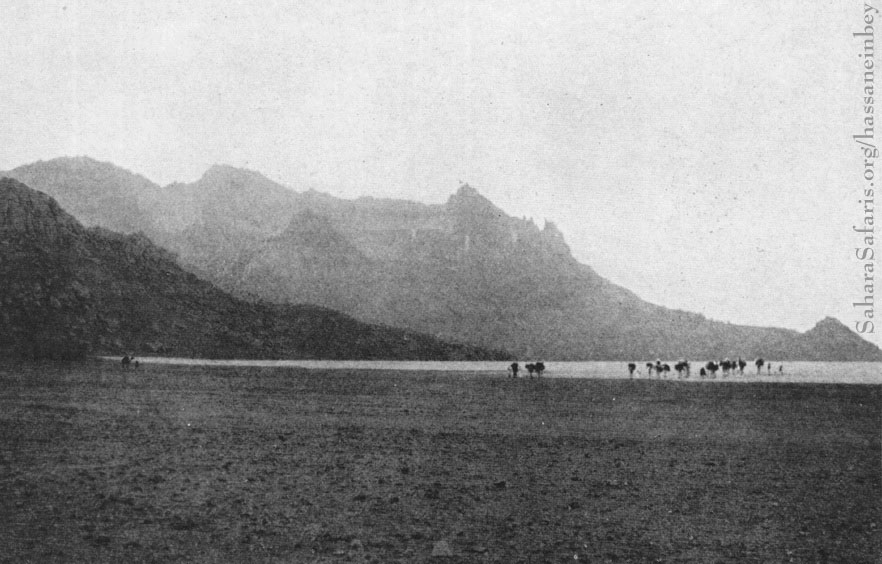
The caravan approaching Arkenu early in the morning. Sunlight piercing a gap in the mountain wall throws a white streak across the sands resembling water. Courtesy of SaharaSafaris.org.
Like explorers who came before him, and the traditions he embraced, he diligently recorded every aspect of his journey and left behind a narrative that is considered one of the great classics of desert exploration. His work proving an inspiration to the likes of Ralph Bagnold, creator of the LRDG, and none other than Count Almásy of The English Patient fame.
And as our friends at Sahara Safaris put it best “His adventure is inspirational for all who like to explore the Sahara”. But it was more than that, it was a testimony to the human spirit and what it is capable of. His remarkable story, which I believe, not a lot of Egyptians know of, should be explored to its full extent and presented with the most positive light for a generation that has lost sight of what makes a role model.
‘I sit next to him for most meals and his reminiscences of Oxford are a delight to me. He has a quick wit, great courtesy, an interest in all subjects and is a quite unusual type of Egyptian. Slim, sharply featured, with a sallow colour and grey hair brushed straight back from his high forehead, he has an unmistakable Bedouin look. … He has keen penetrating eyes, never looks sleepy and has an air of refinement that the coarse looking Egyptian type entirely lacks. He has never had political inclinations, and, though he is a firm believer in Egypt’s right to govern herself and a fervid Moslem, he is quite without that aggressive conceit which marks other ambitious men in this country. Although his culture and his intellect are occidental, his mentality and nature are from the east. He has an eastern courtesy, and, in conversation, an eastern way of leading you off the path you have selected by a sympathetic evasiveness’. Edward Ford, King Farouk’s English tutor. [Source: Michael Haag].
For more information about this legendary explorer you can visit:
Ahmed Hassanein: Writer, Diplomat and Desert Explorer by Michael Haag
The World of Ahmed Hassanein Bey by Mohamed Mabrouk
Featured photo: all rights reserved by helen_romberg
Tags: 1924, Egypt, Gilf Kebir, Libya, LRDG, National Geographic, Oases, Sahara Safaris, Senoussi, Siwa, Uweinat







